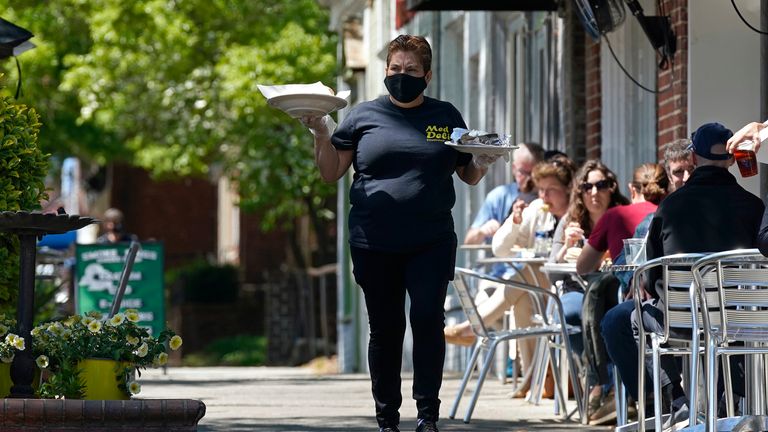COVID loan scheme default estimates add £21bn to record 2020/21 borrowing
It has emerged that the record peacetime public borrowing to pay for the coronavirus crisis during the last financial year has been revised even higher to reflect fears more than £20bn of government-backed loans will never be repaid.
The revelation was made by the Office for National Statistics (ONS) in its latest update on the state of the nation’s finances.
It reported that a provision just shy of £21bn had been made for defaults under loan schemes for firms, such as the bounce back loan scheme, which shelled out £80bn to help companies navigate pandemic disruption.
The sum was lower than the £27bn repayment shortfall projected by the Office for Budget Responsibility.
The ONS said its total borrowing estimate for 2020/21 now stood at £325.1bn as a result of the default estimate being included.
The increased sum was divulged shortly before the Treasury revealed that some of the pain would be offset through repayments in furlough cash.
It said that businesses had returned £1.3bn to date as the economy continued to reopen ahead of the wage support scheme’s end on 30 September.
The wider ONS figures showed public borrowing fell less than expected in August with net borrowing of £20.5bn during the month as the Treasury continued to face hefty bills related to the COVID-19 pandemic.
The figure was £5bn higher than economists polled by Reuters had expected.
The data showed that borrowing so far this financial year had reached £93.8bn.
That was £88.9bn less than the same period a year ago when the economy was first gripped by the public health emergency.
The ONS said that public debt as a share of gross domestic product (GDP) totalled 2.2trn – or 97.6% of GDP – in August, the highest ratio since March 1963.
Chancellor Rishi Sunak is due to reveal his budget late next month as well as new multi-year spending limits for individual government departments.
Continuing challenges for the Treasury include the impact of the national shortage of workers, which business expects to limit the recovery for the economy over the next two years.
Another is the fact that surging inflation is pushing up the cost of interest payments on government debt.
The ONS said that interest payments during August came in at £6.3bn and were a “result of movements in the retail prices index (RPI) to which index-linked gilts (government bonds) are pegged.”
There is speculation Mr Sunak will use the looming fiscal event to outline some longer-term borrowing goals, having previously warned that the public finances must be placed on a more sustainable footing.
Isabel Stockton, research economist at the Institute for Fiscal Studies, said: “For the overall health of the public finances, the precise size of last year’s historic spike in borrowing is not all that important.
“What matters more are the strength of the eventual recovery, whether current strength in tax receipts persists into future years and whether the large income tax, corporation tax, and National Insurance tax rises announced since March are actually implemented as planned.
“These questions will determine whether the chancellor can afford to top up tight spending plans in next month’s spending review to address some of the myriad challenges facing public services while remaining on course to eliminate the current budget deficit in the medium term.”



